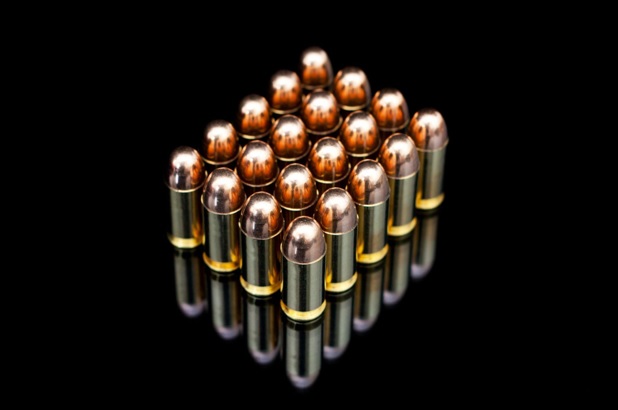Recoil Reduction with Your New Rock Island 1911 Pistol
Dec 18th 2023
Got a new Rock Island 1911 pistol? They’re affordable, reliable, and accurate, and most can be used for various shooting disciplines ranging from competitive shooting to concealed carry and even hunting.
Most are also chambered in either 9mm or .45 ACP, the latter of which produces a lot of recoil for those that are not used to shooting handguns.
If your Rock kicks a bit harder than you’d like, consider these following suggestions for recoil reduction.
Does It Have a Threaded Barrel? Install a Compensator
In most cases, the easiest fix for excess recoil is to install a compensator. If you have a Rock Island 1911 pistol with a threaded barrel, all you need to do is get one that fits the threads and install it yourself.
In most cases, a compensator can reduce felt recoil by as much as 50% without adversely affecting shot power or accuracy at all. This makes them highly valuable muzzle devices for recoil reduction.
If your handgun does not have a threaded barrel, there are two other practical options, both of which involve a gunsmith.
One is to have a gunsmith install a compensator (permanently) to your barrel. The other is to have the gunsmith port your barrel, which has the potential to have effectively the same effects of recoil reduction as a compensator.
Shoot Lighter Loads

Want a quick way to decrease felt recoil, that doesn’t require you to make any changes whatsoever to the Rock Island 1911 pistol itself?
It’s easy - just shoot different (lighter) loads.
Here’s how this works. If you’re not liking the effects of felt recoil with your 1911 pistol, start shopping ammo at the gun shop.
Look at the ammo package for muzzle energy. The lower the muzzle energy, the lower the felt recoil will be.
If muzzle energy is not disclosed, you can determine it on your own. The formula for muzzle energy is to multiply the bullet’s mass by its muzzle velocity squared.
That is:
Muzzle energy = (bullet mass)(bullet velocity)2
The higher the muzzle energy, the higher the kick. So, if you’re shooting .45 ACP loads that produce 530 ft-lbs of energy and you switch to a different, lighter load that produces 500 ft-lbs, you’ll feel less recoil.
If you don’t want to calculate muzzle energy, all else being equal, shoot lighter bullets in loads that produce less muzzle velocity.
Install a Heavier Guide Rod
This “hack” also has to do with mass, and so it basically follows the same principle as the maxim we introduced above. Except, in this case, you will be adding mass to the gun, not subtracting it from the bullet.
Basically, the principle here is that when you install a heavier guide rod, you add mass to the Rock Island 1911 pistol that will help absorb the force of recoil.
There is another benefit to installing a heavier guide rod. It doesn’t just add mass - it adds mass near the muzzle, which helps weigh down the nose of the gun. As a result, a heavier guide rod can help cut the effects of muzzle flip, too.
With less noticeable muzzle flip, you can keep your sights on target, potentially even making faster, more accurate follow-up shots.
Just be warned: this change alone won’t make a huge dent in how much felt recoil you perceive. If you’re going to do this, pair the effort with a reduction in muzzle energy (shoot lighter loads) and you may notice more of a difference.
Get a Grip: Hold It Right

Last but not least, our final recommendation is to adopt a proper grip. There are right ways to hold a handgun, and wrong ways to hold a handgun, and while your grip won’t mathematically change the actual, absolute force of free recoil, holding it right will make it easier for you to absorb it.
Here’s the general rule: high and tight. You want your shooting and support hands high on the frame, and you want to maximize contact between your hands and the firearm. The better you accomplish this, the better you will be able to wrangle recoil.
Your shooting hand should come nearly up to the base of the slide at the back of the pistol. Wrap three fingers around the grip, firmly, with your trigger finger laying along the base of the slide until ready to shoot. The thumb of your shooting hand should rest along the base of the slide on the other side of the gun.
Wrap your support hand fully around your shooting hand, with all four fingers supporting your shooting hand, with your support index finger either up at the base of the trigger guard, or in front of it. Lay your support hand thumb alongside your shooting thing, so that the tip of your support hand thumb extends just beyond the tip of your shooting hand thumb.
This grip, which will both maximize surface contact area with the firearm, as high as possible on the frame, will make it easier for you to control the pistol when you fire it.
Questions About Your Rock Island 1911 Pistol? Contact Us
The tips covered here should help you corral recoil with your Rock Island 1911 pistol. If you have any questions about handling, recoil, cleaning, or anything else related, get in touch with us here at 610-250-3960 or come visit us in our showroom in Easton, Pennsylvania and we will be more than happy to help.

